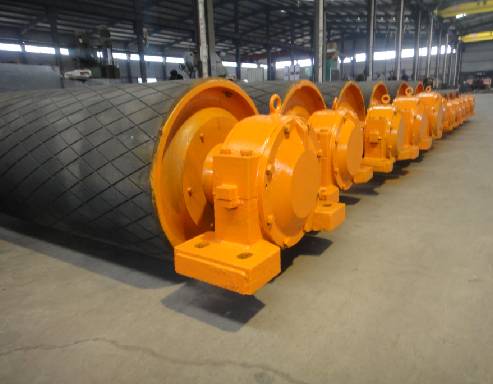 Afrikaans
Afrikaans  Albanian
Albanian  Amharic
Amharic  Arabic
Arabic  Armenian
Armenian  Azerbaijani
Azerbaijani  Basque
Basque  Belarusian
Belarusian  Bengali
Bengali  Bosnian
Bosnian  Bulgarian
Bulgarian  Catalan
Catalan  Cebuano
Cebuano  Corsican
Corsican  Croatian
Croatian  Czech
Czech  Danish
Danish  Dutch
Dutch  English
English  Esperanto
Esperanto  Estonian
Estonian  Finnish
Finnish  French
French  Frisian
Frisian  Galician
Galician  Georgian
Georgian  German
German  Greek
Greek  Gujarati
Gujarati  Haitian Creole
Haitian Creole  hausa
hausa  hawaiian
hawaiian  Hebrew
Hebrew  Hindi
Hindi  Miao
Miao  Hungarian
Hungarian  Icelandic
Icelandic  igbo
igbo  Indonesian
Indonesian  irish
irish  Italian
Italian  Japanese
Japanese  Javanese
Javanese  Kannada
Kannada  kazakh
kazakh  Khmer
Khmer  Rwandese
Rwandese  Korean
Korean  Kurdish
Kurdish  Kyrgyz
Kyrgyz  Lao
Lao  Latin
Latin  Latvian
Latvian  Lithuanian
Lithuanian  Luxembourgish
Luxembourgish  Macedonian
Macedonian  Malgashi
Malgashi  Malay
Malay  Malayalam
Malayalam  Maltese
Maltese  Maori
Maori  Marathi
Marathi  Mongolian
Mongolian  Myanmar
Myanmar  Nepali
Nepali  Norwegian
Norwegian  Norwegian
Norwegian  Occitan
Occitan  Pashto
Pashto  Persian
Persian  Polish
Polish  Portuguese
Portuguese  Punjabi
Punjabi  Romanian
Romanian  Russian
Russian  Samoan
Samoan  Scottish Gaelic
Scottish Gaelic  Serbian
Serbian  Sesotho
Sesotho  Shona
Shona  Sindhi
Sindhi  Sinhala
Sinhala  Slovak
Slovak  Slovenian
Slovenian  Somali
Somali  Spanish
Spanish  Sundanese
Sundanese  Swahili
Swahili  Swedish
Swedish  Tagalog
Tagalog  Tajik
Tajik  Tamil
Tamil  Tatar
Tatar  Telugu
Telugu  Thai
Thai  Turkish
Turkish  Turkmen
Turkmen  Ukrainian
Ukrainian  Urdu
Urdu  Uighur
Uighur  Uzbek
Uzbek  Vietnamese
Vietnamese  Welsh
Welsh  Bantu
Bantu  Yiddish
Yiddish  Yoruba
Yoruba  Zulu
Zulu High-Performance Concave Guide Rollers for Optimal Material Handling
Understanding Concave Guide Rollers Their Importance and Applications
Concave guide rollers are specialized components frequently utilized in various industrial settings to facilitate material handling and movement. These rollers are designed with a curved surface that allows them to effectively guide and transport materials, preventing misalignment and ensuring smooth operation. In this article, we will delve into the significance of concave guide rollers and their diverse applications across different sectors.
One of the primary advantages of concave guide rollers is their ability to maintain alignment during the conveying process. This is particularly important in industries where precision is crucial, such as manufacturing and packaging. By providing a natural channel for materials to follow, concave guide rollers reduce the risk of product displacement or jamming, which can lead to costly downtime and inefficient production cycles.
Concave guide rollers are commonly used in conveyor systems, where they help in directing products along a specific path. The concave shape of the roller creates a stable surface for the products, which minimizes the risk of them straying off course. This feature is especially useful when handling bulky or irregularly shaped items that may not easily stay aligned on flat surfaces.
In addition to their use in conveyor systems, concave guide rollers play an essential role in the operation of various machinery across different industries. For instance, in the textile industry, these rollers are employed in fabric handling systems where precise alignment is necessary for cutting and sewing processes. They ensure that the fabric moves smoothly through the machine, reducing the risk of wrinkles or tears that could compromise the quality of the final product.
concave guide roller

Moreover, concave guide rollers are integral to the operation of packaging systems, where they help guide items through the packaging machinery. By ensuring that products maintain their orientation as they travel through different stages of the packaging process, these rollers enhance efficiency and accuracy, leading to fewer errors and wasted materials.
The automotive and aerospace industries also benefit from the use of concave guide rollers. In these sectors, parts must often be transported through various assembly and manufacturing processes with precision. The rollers assist in maintaining the correct positioning of components, which is crucial for the overall safety and reliability of the finished products.
It's important to note that the material composition and design of concave guide rollers can vary depending on their intended use. Factors such as load capacity, speed, and environmental conditions play a significant role in determining the right type of roller for a specific application. Therefore, manufacturers must carefully assess these parameters to select the most suitable concave guide rollers for their operations.
In conclusion, concave guide rollers are vital components in numerous industrial applications. Their unique design not only enhances the operational efficiency of conveyor systems and machinery but also ensures that products remain aligned and undamaged throughout the handling process. As industries continue to evolve, the importance of these rollers in facilitating smoother operations will undoubtedly grow, making them a topic worth exploring further for those involved in material handling and logistics.
-
Revolutionizing Conveyor Reliability with Advanced Rubber Lagging PulleysNewsJul.22,2025
-
Powering Precision and Durability with Expert Manufacturers of Conveyor ComponentsNewsJul.22,2025
-
Optimizing Conveyor Systems with Advanced Conveyor AccessoriesNewsJul.22,2025
-
Maximize Conveyor Efficiency with Quality Conveyor Idler PulleysNewsJul.22,2025
-
Future-Proof Your Conveyor System with High-Performance Polyurethane RollerNewsJul.22,2025
-
Driving Efficiency Forward with Quality Idlers and RollersNewsJul.22,2025





























